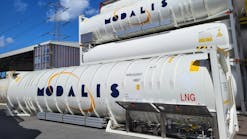CALSTART’s Global Commercial Vehicle Drive to Zero program recently launched an online, publicly available tool aimed at cataloging models of current and upcoming zero-emission commercial trucks, buses and off-road equipment.
A first-of-its-kind platform, the Zero-Emission Technology Inventory (ZETI) tool creates a foundation for better understanding this developing technology segment. Drive to Zero plans to expand the tool in the coming months into a global index of commercially available zero-emission commercial vehicles.
“This sector is developing quickly and fleets as well as policymakers, cities, investors and manufacturers need to understand what is truly available and what is in the real pipeline,” said Bill Van Amburg, executive vice president of CALSTART, a clean transportation accelerator. “We want to provide open access to information about these vehicles and eventually provide a regional picture of the sector so global fleets can grow smarter, investors can get a clearer picture and policymakers can draft incentives or rules to plan around technologies that are both already out there and are coming soon.”
In addition to global vehicle availability information, ZETI provides users with granular data for current and known future offerings including weight/class, estimated payload/passenger capacity, driving range, and energy storage capacity. A timeline feature offers users a sneak peek at new model availability data indicating where and when new models will debut on a commercial scale. Drive to Zero’s Global Director, Dr Cristiano Façanha unveiled the tool at the Cities Taking Freight Action urban freight forum in Toronto, organized by the Pembina Institute.
“Through Drive to Zero we are working to build a network of globally connected urban centers where state-of-the-art medium and heavy-duty technologies, along with their economic, clean air and climate benefits are the norm, rather than the exception,” Façanha said. “Our partners made clear that in order to realize our vision as quickly as possible, we need tools like ZETI to tell us where we are today and what will be coming in the near future.”
Drive to Zero is designed to catalyze the growth of markets for zero- and near-zero-emission trucks, buses and off-road vehicles. It unites key regions of change, along with leading manufacturers and fleet users, to collaboratively speed development and adoption through policies, financial incentives, infrastructure investments and pilot projects that support early market success and create conditions for organic growth.
“At least 35 mayors, representing some of the world’s largest urban centers, have already committed to creating a major zero-emission area in their city by 2030. City officials need access to reliable information on the zero-emission vehicles coming to market to help inform the roll out of these areas,” said Cristina Miclea, Zero Emission Freight Manager, Transportation and Urban Planning for C40 Cities, a network of the world’s megacities committed to addressing climate change. “Good data can help inform discussions with the freight industry and identify collective solutions to increase the number of zero-emission commercial vehicles on our streets.”
CALSTART launched Drive to Zero in 2018. Since then, industry leaders such as (but not limited to) IKEA’s Ingka Group, BYD, Nikola, Siemens, The Lion Electric Co, New Flyer Industries, Southern California Edison, Ryder, Proterra and governments like the nation of Canada, Region Vastra Goteland, the cities of Los Angeles, New York, Vancouver, Oslo, and Sacramento have agreed to work collaboratively to achieve Drive to Zero’s goal to drive market viability for the zero-emission commercial vehicle sector in key applications and regions by 2025 and achieve full market penetration by 2040. A list of Drive to Zero pledge signatories can be found at globaldrivetozero.org/about/pledge-partners.
The Drive to Zero program is built on a technology strategy developed by CALSTART and the California Air Resources Board, called the beachhead strategy, that identifies the commercial vehicle market segments, mostly in urban and return-to-base operations, where zero- and near-zero technology is likely to succeed first. Those early successes drive pathways into new segments where the technology can flourish next.
Drive to Zero is developing tools, identifying best practices, eliminating barriers, and coordinating among stakeholders to ensure the success of beachhead markets. To date, Drive to Zero has been working collaboratively with C40, The Climate Group’s EV100 initiative, the Transport Decarbonisation Alliance, Clean Energy Canada and partners in regions such as the United States, Canada, the Netherlands, U.K., Sweden, Chile, China and India.
“More and more companies are committing to switch their fleets to electric, but finding the right vehicles, in particular the medium-and heavy-duty sector, is one of the main challenges they encounter,” said Sandra Roling, Head of EV100, at The Climate Group. “Having an unbiased market overview, including models set to be available in the near future, will be hugely helpful for their planning, and it will foster new business opportunities.”
Visit globaldrivetozero.org for more information.










